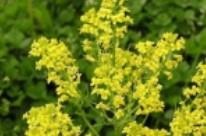Cressleaf groundsel is a member of the aster family and displays yellow daisy like blooms in the springtime on upright hollow stems that have a purple hue. These plants are winter annuals, meaning the seed germinates in the fall producing vegetative growth and then flowers in the springtime. If allowed to set seed, the plants will appear again in greater numbers the year following. The plants typically go unnoticed in the fall, which is the best time for weed control.
Cressleaf is most commonly found in annual crop settings because bare soils in the fall and spring allow the plants to grow without competition from the crops. However, it can be found in pastures and hayfields if seed travels from an infested field nearby. Effective herbicide control can be accomplished in the fall using products that contain 2,4-D. If the plants are already flowering, mowing and removing the plant residue is the best option to prevent animal consumption and seed deposition.

Yellow rocket is often confused with cressleaf groundsel. Photo by Pete Landschoot
There are other yellow flowers with a similar appearance blooming now that are less concerning, but problematic as competition in crop stands. One that is commonly confused with cressleaf groundsel is another winter annual called yellow rocket. Unlike cressleaf, yellow rocket is in the mustard family. The flowers look very different from cressleaf and the plants are typically shorter on green stems and grow with a taproot. Although yellow rocket can cause digestive upset if consumed in large quantities, it is not considered poisonous or noxious.
Before implementing any weed control program, getting an identification confirmation is very important! Study the whole plant before making a judgement call on how to address it’s presence.
Source : osu.edu